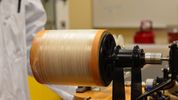Switzerland’s sparkling transformation of its rivers and lakes is an inspiring testament to what long-term environmental commitment can achieve. Once polluted with sewage, these waterways now run clear and healthy, supporting wildlife, recreation, and local pride. This shift didn’t happen overnight—decades of investment in wastewater treatment, policy enforcement, and public education made it possible.
The lesson here is powerful: restoring polluted waterways is not just a dream—it’s a real, achievable goal. Countries struggling with poor water quality can look to Switzerland as a blueprint. From upgrading sewage infrastructure to involving communities in conservation, the path to clean water starts with prioritisation and persistence.
This story also reminds us of the importance of science and innovation in environmental progress. Analytical water testing, for example, plays a critical role in identifying pollutants, tracking improvement, and ensuring safety.
Switzerland’s success offers hope and a clear message: with the right tools, regulations, and dedication, clean water can become a reality anywhere. Let’s take this momentum and flow it forward—our rivers, lakes, and future generations are depending on it.
According to one source, in 1965, only 14% of the population of Switzerland was connected to a wastewater treatment plant. Today it’s 98%, and the government spends €191 on water purification per citizen, compared to just €98 in the UK, for example.
 unknownx500
unknownx500
















